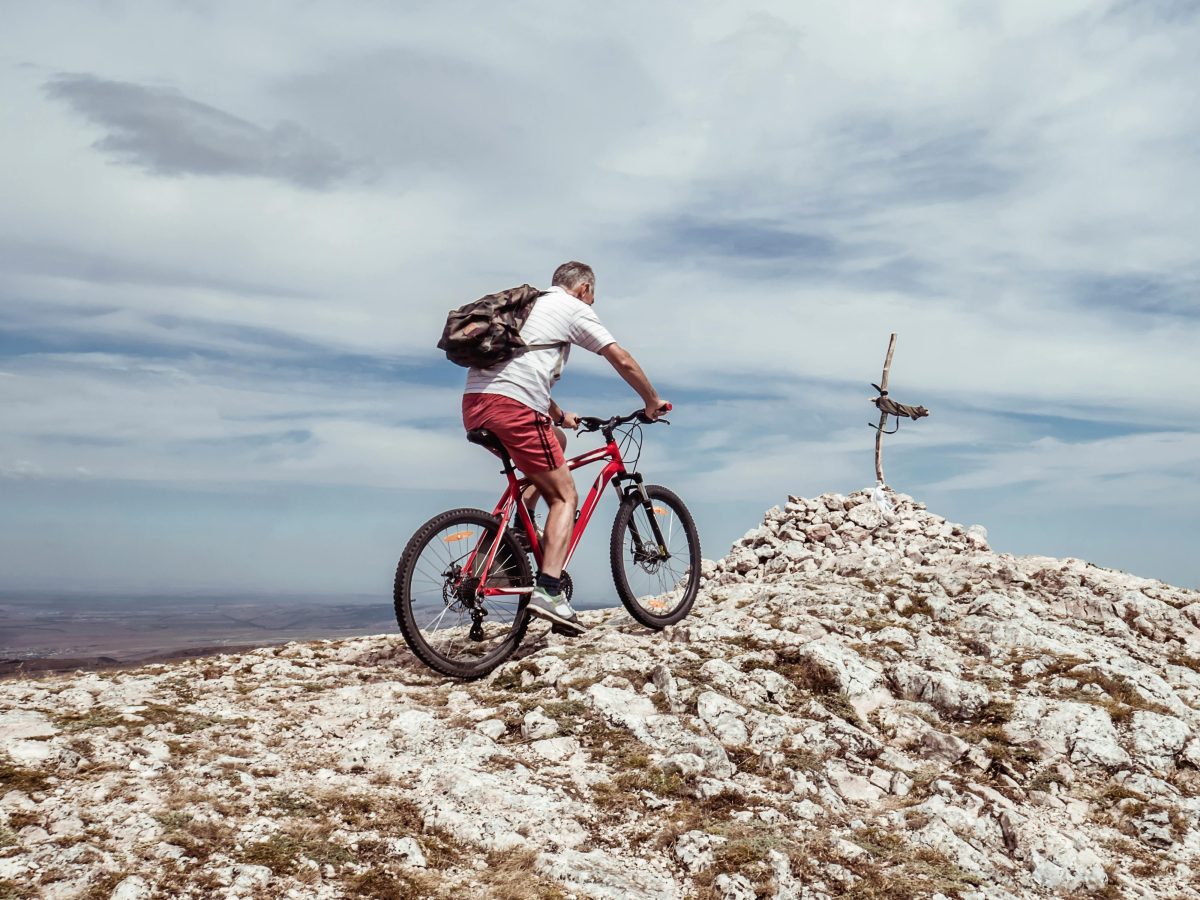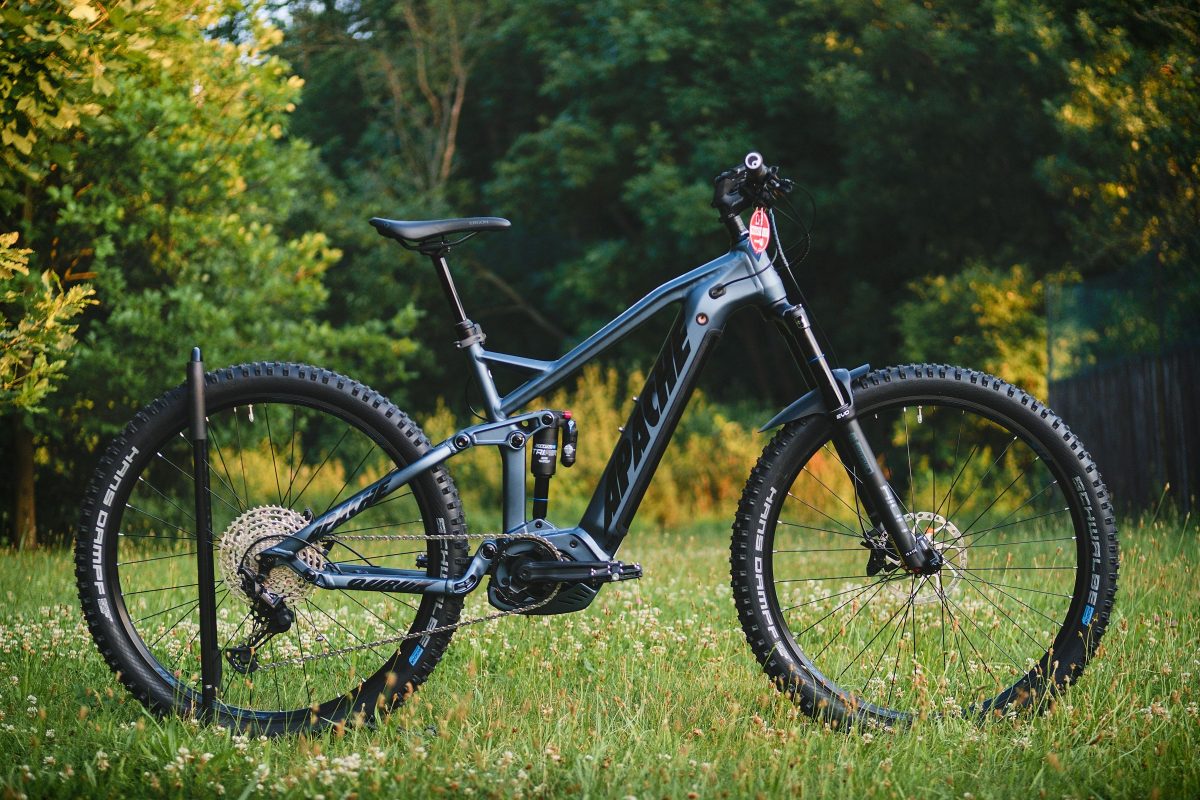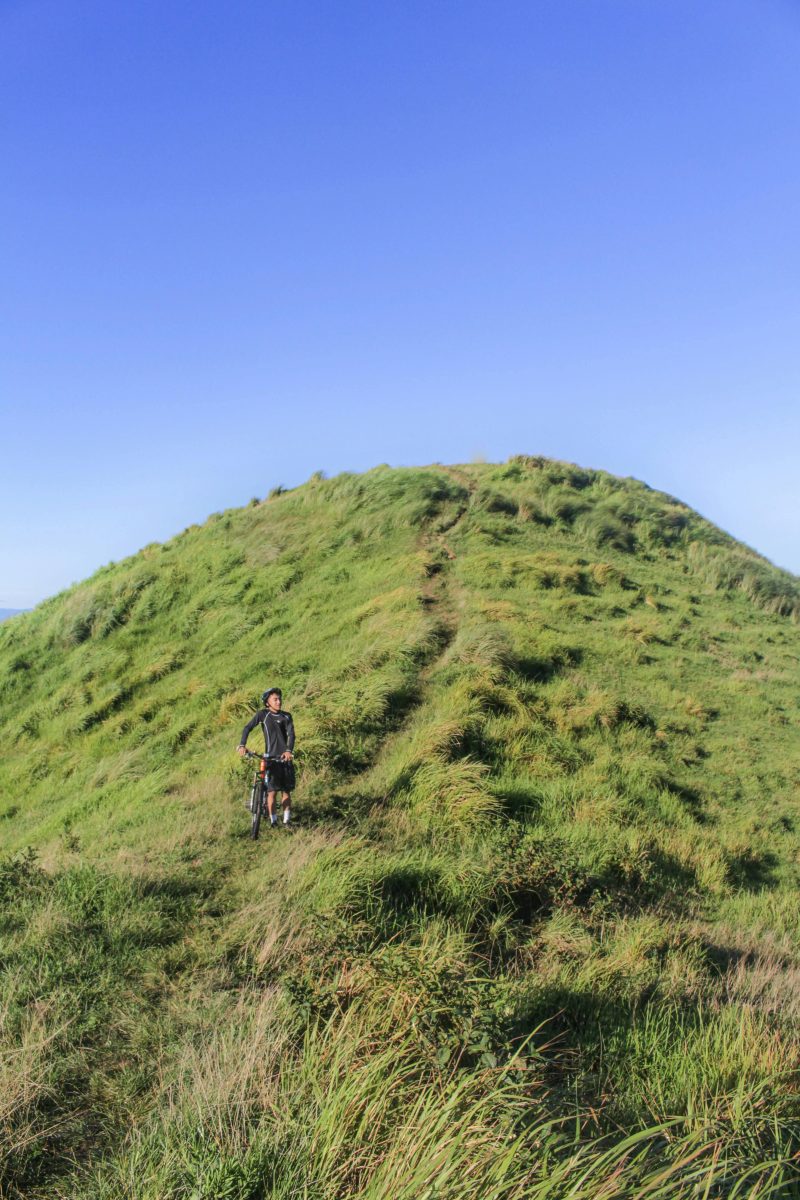Last Updated on: 14th July 2024, 09:28 am
Introduction to Mountain Biking as a Dual-Purpose Activity

Mountain biking stands as a thrilling blend of adventure and fitness, carving paths through nature’s untamed landscapes. This sport, more than just a test of endurance and skill, offers a unique dual benefit: it’s a powerful cardiovascular workout and an exhilarating adventure. Riders experience the raw beauty of the outdoors, navigating through forests, over hills, and across streams, their hearts pumping as vigorously as their pedals.
The history of mountain biking traces back to the 1970s in California, where it began as a fringe hobby for cycling enthusiasts seeking new challenges. Since then, it has evolved dramatically, with advancements in technology and design enhancing the experience and accessibility. Today, mountain biking appeals to a broad audience, from those seeking to improve their cardiovascular health to adventurers yearning for the thrill of the ride.
- Embracing mountain biking means joining a community that values not only physical fitness but also the spirit of adventure.
- It’s a sport that demands resilience and rewards it with unparalleled views and the satisfaction of conquering rugged terrains.
- Whether you’re a seasoned rider or a newcomer, the world of mountain biking invites you to explore your limits and the great outdoors.
The Cardiovascular Benefits of Mountain Biking

Mountain biking stands out as a heart-pumping adventure, offering more than just an adrenaline rush. It’s a dynamic way to improve heart health, engaging the body in a cardiovascular workout that rivals traditional forms of cardio. The constant pedaling increases heart rate, promoting better blood circulation and strengthening the heart muscle over time.
Compared to stationary biking or running, mountain biking introduces the body to varied terrain. This natural variability demands different levels of effort, making the heart work harder and more efficiently. Hills and uneven surfaces challenge the rider, intensifying the workout without the monotony of a gym setting. It’s this ever-changing landscape that puts mountain biking a pedal stroke ahead of other cardio exercises.
- Personal stories from the mountain biking community often highlight significant health improvements.
- Riders share tales of lowered blood pressure, reduced stress levels, and enhanced overall fitness.
- These anecdotes not only underscore the physical benefits but also the mental health advantages, as the scenic beauty and solitude of nature provide a peaceful backdrop for exercise.
Embracing mountain biking means not only embarking on thrilling adventures but also taking a proactive step towards better cardiovascular health. The sport offers a unique combination of excitement and fitness, challenging the body and rewarding the spirit with each ride. Whether you’re seeking to boost your heart health or simply looking for an adventurous way to stay fit, mountain biking presents an enticing path to achieving your goals.
Mountain Biking: The Adventure Aspect

Mountain biking transcends the mere act of cycling, inviting riders into a world of exploration and excitement. Venturing into new trails and landscapes not only refreshes the mind but also presents unique challenges and terrains that test one’s skills and endurance. The allure of discovering hidden paths and scenic vistas adds a layer of adventure that is unparalleled in other forms of exercise.
The thrill of downhill rides and navigating technical challenges offers an adrenaline rush that is addictive. These moments, where skill and speed converge, push the rider to their limits, enhancing both physical and mental agility. The satisfaction derived from overcoming difficult sections of a trail or mastering a new technique is immense, contributing to a sense of achievement and confidence.
- The mental health benefits of outdoor adventure cannot be overstated.
- Immersing oneself in nature, away from the hustle and bustle of daily life, provides a tranquil environment that fosters mindfulness and reduces stress.
- The combination of physical exertion and natural beauty helps to clear the mind, promoting a sense of well-being and emotional balance.
Building a sense of community through shared experiences is another cornerstone of mountain biking. Group rides and events bring together individuals with a common passion, creating bonds and friendships that extend beyond the trails. This camaraderie not only enhances the social aspect of the sport but also encourages motivation and support among riders, making the adventure even more rewarding.
In conclusion, mountain biking offers a unique blend of adventure, fitness, and community. It challenges the body, invigorates the spirit, and nurtures the mind, making it an ideal pursuit for those seeking to enrich their lives through outdoor activity.
Gearing Up for Mountain Biking

Before embarking on a mountain biking journey, equipping yourself with the right gear is crucial. Essential equipment includes a helmet, gloves, and protective eyewear, safeguarding against potential hazards. Additionally, investing in a high-quality mountain bike tailored to your needs enhances the experience significantly. Factors such as the bike’s suspension, frame material, and wheel size play pivotal roles in navigating diverse terrains. Comfort and fit cannot be overlooked, as they are paramount for long rides. A well-fitted bike ensures efficient energy transfer from your body to the bike, minimizing fatigue and maximizing enjoyment.
- Choosing the right mountain bike involves considering the type of terrain you’ll be exploring.
- The importance of a proper fit transcends mere comfort; it’s about performance and endurance.
- Safety gear, while often underestimated, is a non-negotiable aspect of mountain biking.
Ultimately, gearing up for mountain biking is about striking a balance between safety, comfort, and performance. The right equipment and a well-chosen bike make all the difference, setting the stage for an unforgettable adventure on the trails. As riders gear up, they’re not just preparing for a ride; they’re setting the foundation for a journey that tests their limits and rewards them with unparalleled exhilaration.
Skills and Techniques for Effective Mountain Biking

Basic Skills Every Mountain Biker Should Master
Mastering mountain biking begins with the basics. Balance and control form the foundation, enabling riders to navigate trails with confidence. Learning to shift weight effectively improves maneuverability, especially on uneven terrains. Braking techniques, too, are crucial; knowing when and how much to brake can prevent accidents. Lastly, mastering the art of pedaling efficiently conserves energy, allowing for longer rides.
Advanced Techniques for Tackling Challenging Terrains
As skills progress, advanced techniques become essential for conquering more demanding trails. Perfecting the bunny hop, for instance, allows riders to clear obstacles without slowing down. Technical climbing skills help tackle steep inclines, while mastering descents ensures safety and speed on downhill sections. Cornering skills, crucial for maintaining speed and balance, require practice but significantly enhance riding efficiency.
Tips for Endurance Building and Efficient Riding
Building endurance is key for longer, more challenging rides. Interval training, mixing short bursts of intense effort with periods of rest, boosts cardiovascular health and stamina. Consistent riding, gradually increasing distance and difficulty, also improves endurance. Nutrition and hydration play a vital role; fueling the body correctly enhances performance and recovery. Lastly, efficient riding techniques, such as proper gear selection and maintaining a steady cadence, conserve energy, allowing riders to enjoy the trails longer.
Mountain biking is not just about the thrill; it’s a test of skill, endurance, and technique. Whether you’re a beginner or an experienced rider, focusing on these aspects can significantly enhance your riding experience. Embrace the challenge, and let the adventure begin.
Finding Your Trail: How to Get Started with Mountain Biking

Embarking on your mountain biking journey begins with discovering the right trails. A wealth of resources is available to help you find trails that match your skill level and scenic desires.
- Local bike shops often provide trail maps and insider tips.
- Online databases and websites like MTB Project and Trailforks offer comprehensive listings with user reviews and difficulty ratings.
Joining local mountain biking groups and clubs can be invaluable. These communities foster camaraderie and offer organized rides, which are perfect for beginners to learn from more experienced riders.
- Clubs often have a deep knowledge of the local trail systems and can guide you to the best spots while ensuring you ride safely.
Technology also plays a role in connecting riders.
- Apps such as Strava not only track your rides but also help you discover popular routes in your area.
- Online forums and social media groups provide platforms for mountain bikers to share experiences, advice, and arrange meet-ups.
Engaging with these communities can lead to new friendships and the discovery of trails that may not be widely known.
Whether you’re looking for a leisurely ride through serene forests or a challenging climb up rugged peaks, the right trail is out there. Utilize these resources, connect with fellow enthusiasts, and you’ll find your perfect path to adventure and fitness on the mountainside.
Overcoming Challenges and Staying Motivated

Beginner mountain bikers face a myriad of challenges, from mastering technical skills to overcoming the mental hurdles of fear and self-doubt. The rugged terrain, unpredictable weather, and the physical demands of the sport can be daunting. Yet, it’s these very challenges that make mountain biking an exhilarating adventure.
- Overcoming fear and building confidence starts with small, manageable steps. Familiarizing oneself with the bike, practicing basic skills in a safe environment, and gradually increasing the difficulty of trails can transform apprehension into assurance.
- Remember, every expert rider was once a beginner.
Setting goals and tracking progress is crucial.
- Whether it’s mastering a new skill, completing a challenging trail, or improving endurance, goals give direction and purpose.
- Celebrating small victories along the way fuels motivation and the desire to push further.
Events and competitions play a significant role in staying motivated.
- They provide milestones to strive for and opportunities to connect with the mountain biking community.
- Participating in events, even as a spectator, can inspire and motivate beginners to set new goals and challenge themselves.
Ultimately, the journey of a mountain biker is one of personal growth and adventure. Embrace the challenges, celebrate progress, and let the thrill of the ride fuel your passion for the sport.
In Closing
Mountain biking fuels both heart and spirit. It’s a journey of resilience, offering more than just a workout. Through the blend of physical challenge and natural beauty, riders find a unique path to wellness, embracing the outdoors as a playground for adventure and self-discovery. As we gear up, master skills, and connect with the community, we’re reminded of the endless possibilities that await on the trails. Let’s pedal forward, embracing each ride as an opportunity to explore, grow, and thrive.
Mountain Biking for Cardio and Adventure FAQs
Yes, mountain biking can significantly aid in weight loss by burning calories and building muscle. It’s a high-intensity workout that can burn more calories than many other forms of exercise, especially when tackling challenging terrains. Consistency and a balanced diet will amplify the weight loss benefits.
Improving mountain biking skills requires practice, patience, and possibly coaching or instructional videos to learn proper techniques. Focusing on core skills like braking, cornering, and balancing can significantly enhance your riding experience. Joining a local riding group or participating in workshops can also provide valuable practice and advice.
Choosing the right mountain bike involves considering the bike’s size, the type of suspension, and the terrain you plan to ride on. It’s important to get a bike that fits your body to ensure comfort and control. Researching and testing different bikes can help find the best match for your needs.
Mountain biking often provides a more intense workout than road biking due to the varying terrains and the need for constant adjustments in speed and posture. It engages more muscle groups, particularly the core and upper body, in addition to the legs. However, both disciplines significantly improve cardiovascular health and endurance, each offering unique challenges and benefits.
Engaging in mountain biking 2-3 times a week can lead to noticeable fitness improvements. Consistency is key, as it allows your body to adapt to the physical demands, increasing stamina and strength over time. Balancing rest days is crucial to allow for recovery and muscle growth.
Yes, mountain biking is excellent for cardiovascular health as it elevates the heart rate and improves endurance. It involves various terrains that challenge the body differently, enhancing heart function and circulation. Regular mountain biking can lead to significant improvements in cardiovascular fitness.
Mountain biking is suitable for beginners, provided they start on easier trails and gradually progress to more challenging ones. Learning basic techniques and starting with the right equipment can make the experience enjoyable and safe. Many communities offer beginner courses and group rides to help new riders get started.
The risks of mountain biking include falls, collisions, and the potential for overuse injuries. Navigating uneven and rugged terrains increases the risk of accidents, making protective gear and proper technique crucial. Awareness and preparation can mitigate these risks significantly.
To start mountain biking, you need a mountain bike that suits your size and riding style, a helmet for safety, and gloves for grip and protection. Additional recommended gear includes a hydration pack, appropriate footwear, and protective eyewear. Investing in quality equipment enhances the riding experience and ensures safety.
Eating a meal rich in carbohydrates and moderate in protein about 2-3 hours before mountain biking provides the necessary energy and supports muscle function. Foods like oatmeal, bananas, and lean meats are ideal to fuel your ride. Staying hydrated before and during your ride is also crucial for optimal performance.
Orlando is a all round athlete from Australia, now resident in Germany. His sports of passion of American Football(Offensive line), weight training and indoor rock climbing where he uses his 195cm wing span to his advantage.



